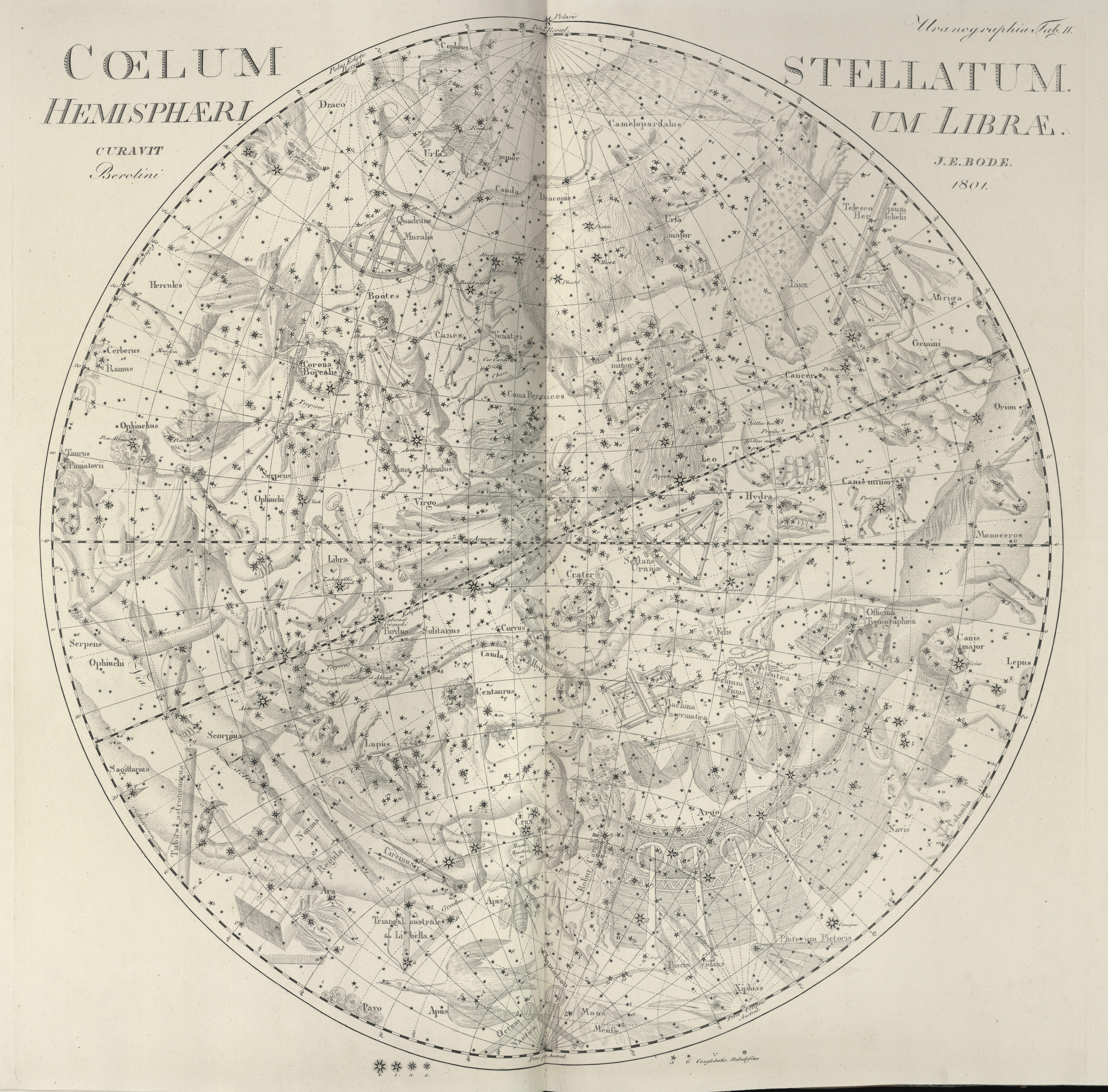Vir - Virgo the Maiden
Intro and Visual description
Continue past Arcturus on the curve from the Dipper’s handle ("Arc to Arcturus, then speed on to Spica"). To "Speed on to Spica," go the same distance as it took to reach Arcturus. If it’s not below the horizon, Spica is the brightest star of the constellation Virgo the Maiden. Although Virgo is the second largest constellation in the sky, the rest of its stars are faint. Yet don’t be surprised if you often see a bright visiting planet nearby.
Virgo was long ago recognized for its importance, since it contains the Sun on the day of the Autumn Equinox. Spica lies nearly on the path the Sun follows across the sky, which is called the ecliptic. You won’t see this constellation in the early autumn, for then Virgo lies in the daytime sky.
Galaxies
The Virgo Cluster of galaxies is justly famous as a remarkable part of the sky, well-known to deep-sky observers, about 40,000,000 Light Years away from the Milky Way. The Virgo Cluster of galaxies contains perhaps 3,000 galaxies. To see these beautiful galaxies we must turn a powerful telescope to sweep the sky between the constellations of Virgo the Virgin and Leo the Lion, near the small constellation Coma Berenices (Berenice’s Hair). In a telescope we see them as they were 30-50 million years ago. M87 is one of the brightest galaxies in the Virgo Cluster. Much nearer to us than the Virgo Cluster is one of my deep-sky favorites, the spectacular M104 Sombrero Galaxy, only 25 million light years away.
Now, all the stars that are visible to the naked eye lie within our own Milky Way galaxy. This means that the stars that make up all the constellations, including Virgo and Leo and Coma Berenices, are stars of our own galaxy. The galaxies we see in these constellations are not actually located in the constellations, they are only viewed along the same line of sight. Were we to actually go to another galaxy, even the Andromeda galaxy (which is the closest major galaxy to the Milky Way, only 2.2 million light years away), then the stars of the Milky Way would not be distinguishable. It makes no sense to talk of Andromeda or Virgo as seen from another galaxy, since from another galaxy any observer would see all of the Milky Way stars together, just as we see a small patch of fuzzy light when we look at the Andromeda galaxy. It is not that Andromedans would see our constellation Andromeda differently; they would not distinguish it from the Milky Way at all.
Origin and History
Virgo is included in the ancient star catalogs of Eudoxos of Knidos, Aratos of Soli, and Ptolemy.
Skylore, Literature and Culture
Goddess of agriculture and harvest-time, holding a shock of wheat.










